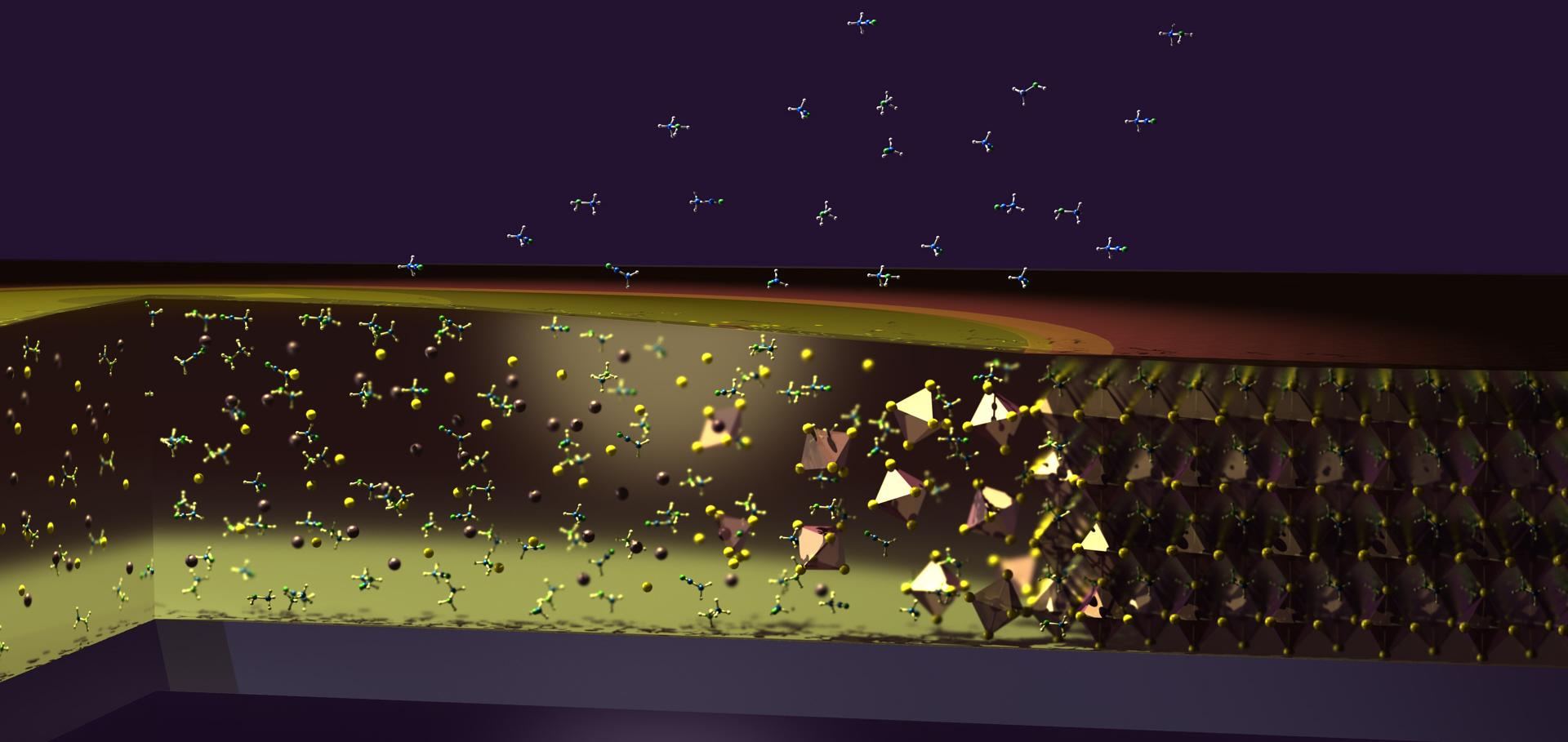Tailoring a Lead-Free Organic–Inorganic Halobismuthate for Large Piezoelectric Effect
Journal of the American Chemical Society (2025)
Abstract:
Molecular piezoelectrics are a potentially disruptive technology, enabling a new generation of self-powered electronics that are flexible, high performing, and inherently low in toxicity. Although significant efforts have been made toward understanding their structural design by targeted manipulation of phase transition behavior, the resulting achievable piezoresponse has remained limited. In this work, we use a low-symmetry, zero-dimensional (0D) inorganic framework alongside a carefully selected 'quasi-spherical' organic cation to manipulate organic-inorganic interactions and thus form the hybrid, piezoelectric material [(CH3)3NCH2I]3Bi2I9. Using variable-temperature single crystal X-ray diffraction and solid-state nuclear magnetic resonance spectroscopy, we demonstrate that this material simultaneously exhibits an order-disorder and displacive symmetry-breaking phase transition. This phase transition is mediated by halogen bonding between the organic and inorganic frameworks and results in a large piezoelectric response, d33 = 161.5 pm/V. This value represents a 4-fold improvement on previously reported halobismuthate piezoelectrics and is comparable to those of commercial inorganic piezoelectrics, thus offering a new pathway toward low-cost, low-toxicity mechanical energy harvesting and actuating devices.Impact of Charge Transport Layers on the Structural and Optoelectronic Properties of Coevaporated Cu 2 AgBiI 6
ACS Applied Materials & Interfaces American Chemical Society 17:28 (2025) 40363-40374
Abstract:
The copper–silver–bismuth–iodide compound Cu2AgBiI6 has emerged as a promising lead-free and environmentally friendly alternative to wide-bandgap lead-halide perovskites for applications in multijunction solar cells. Despite its promising optoelectronic properties, the efficiency of Cu2AgBiI6 is still severely limited by poor charge collection. Here, we investigate the impact of commonly used charge transport layers (CTLs), including poly[bis(4-phenyl)(2,4,6-trimethylphenyl)amine] (PTAA), CuI, [6,6]-phenyl-C61-butyric acid methyl ester (PCBM), and SnO2, on the structural and optoelectronic properties of coevaporated Cu2AgBiI6 thin films. We reveal that while organic transport layers, such as PTAA and PCBM, form a relatively benign interface, inorganic transport layers, such as CuI and SnO2, induce the formation of unintended impurity phases within the CuI–AgI–BiI3 solid solution space, significantly influencing structural and optoelectronic properties. We demonstrate that identification of these impurity phases requires careful cross-validation combining absorption, X-ray diffraction and THz photoconductivity spectroscopy because their structural and optoelectronic properties are very similar to those of Cu2AgBiI6. Our findings highlight the critical role of CTLs in determining the structural and optoelectronic properties of coevaporated copper–silver–bismuth–iodide thin films and underscore the need for advanced interface engineering to optimize device efficiency and reproducibility.Steering perovskite precursor solutions for multijunction photovoltaics
Nature Nature Research (2024)
Abstract:
Multijunction photovoltaics (PVs) are gaining prominence owing to their superior capability of achieving power conversion efficiencies (PCEs) beyond the radiative limit of single-junction cells<sup>1-8</sup>, where improving narrow bandgap tin-lead perovskites is critical for thin-film devices<sup>9</sup>. With a focus on understanding the chemistry of tin-lead perovskite precursor solutions, we herein find that Sn(II) species dominate interactions with precursors and additives and uncover the exclusive role of carboxylic acid in regulating solution colloidal properties and film crystallisation, and ammonium in improving film optoelectronic properties. Materials that combine these two function groups, amino acid salts, considerably improve the semiconducting quality and homogeneity of perovskite films, surpassing the effect of the individual functional groups when introduced as part of separate molecules. Our enhanced tin-lead perovskite layer allows us to fabricate solar cells with PCEs of 23.9, 29.7 (certified 29.26%), and 28.7% for single-, double-, and triple-junction devices, respectively. Our 1-cm<sup>2</sup> triple-junction devices show PCEs of 28.4% (certified 27.28%). Encapsulated triple-junction cells maintain 80% of their initial efficiencies after 860 h maximum power point tracking in ambient. We further fabricate quadruple-junction devices and obtain PCEs of 27.9% with the highest open-circuit voltage of 4.94 V. This work establishes a new benchmark for multijunction PVs.A green solvent enables precursor phase engineering of stable formamidinium lead triiodide perovskite solar cells
Nature Communications Nature Research 15:1 (2024) 10110
Abstract:
Perovskite solar cells (PSCs) offer an efficient, inexpensive alternative to current photovoltaic technologies, with the potential for manufacture via high-throughput coating methods. However, challenges for commercial-scale solution-processing of metal-halide perovskites include the use of harmful solvents, the expense of maintaining controlled atmospheric conditions, and the inherent instabilities of PSCs under operation. Here, we address these challenges by introducing a high volatility, low toxicity, biorenewable solvent system to fabricate a range of 2D perovskites, which we use as highly effective precursor phases for subsequent transformation to α-formamidinium lead triiodide (α-FAPbI3), fully processed under ambient conditions. PSCs utilising our α-FAPbI3 reproducibly show remarkable stability under illumination and elevated temperature (ISOS-L-2) and “damp heat” (ISOS-D-3) stressing, surpassing other state-of-the-art perovskite compositions. We determine that this enhancement is a consequence of the 2D precursor phase crystallisation route, which simultaneously avoids retention of residual low-volatility solvents (such as DMF and DMSO) and reduces the rate of degradation of FA+ in the material. Our findings highlight both the critical role of the initial crystallisation process in determining the operational stability of perovskite materials, and that neat FA+-based perovskites can be competitively stable despite the inherent metastability of the α-phase.Roadmap on established and emerging photovoltaics for sustainable energy conversion
JPhys Energy IOP Publishing 6:4 (2024) 041501


